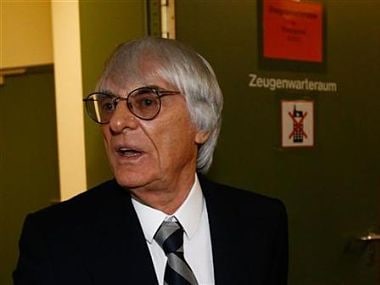Formula One’s most influential figures gathered in Biggin Hill in England last week for a crucial meeting to chalk out a future direction for the sport. Convened at a time when F1 is scratching its head for answers to falling attendance at races, declining television viewership in some regions, the high cost of competition and inequitable revenue distribution, the convening of Formula One’s Strategy Group was billed as a crunch meeting. Present at the gathering were FIA President Jean Todt, the sport’s commercial supremo Bernie Ecclestone, the six teams that are a part of the Group – Ferrari, Red Bull, Mercedes, McLaren, Williams and Force India – and representatives of engine manufacturers. Despite its billing, however, expectations that the meeting would deliver solutions to the sport’s problems were not high. [caption id=“attachment_1675437” align=“alignleft” width=“380”]  File picture of Bernie Ecclestone. Reuters[/caption] The Strategy Group is made up of the FIA, Bernie Ecclestone-led Formula One Management and the five permanent teams, with a floating member occupying the sixth team slot based on its position in the constructors’ championship. Each block on the Strategy Group – the FIA, FOM and the teams – has six votes. Decisions are passed by a majority, before then being sent on to the F1 Commission and the World Motor Sport Council. With the interests of the smaller teams not finding representation (it was the big teams on the Strategy Group who last year scuppered plans to introduce a cost cap) and with each team on the Group (competitors as they are) looking after its own interests, the body very rarely votes through any substantive decisions. Therefore the scepticism, with journalists and fans alike making jokes on Twitter about the Strategy Group members’ inability to agree on even minor points, let alone matters governing the future of the sport. Yet on Friday, a statement on the FIA website signed by Todt and Ecclestone, laid out a raft of new measures headlined by the return of mid-race refuelling in 2017 and plans to make the cars five-to-six seconds quicker. The statement also laid out other proposals approved by the Group which will now be voted on at the Formula One Commission such as: * allowing teams a free choice of dry-weather tyres next season * higher-revving engines and increased noise * making the cars look more aggressive * a “global reflection on race-weekend format” All measures to make starts purely driver-controlled with no outside assistance These measures created a flurry of initial excitement and contained enough meat to keep both those in the sport and the fans chewing over their merits and demerits for some time. But the statement only vaguely addressed the biggest existential threat the sport currently faces – that of costs. Indeed the crushingly high cost of competition combined with the inequitable distribution of income from television rights, race-hosting fees and hospitality revenue has brought several of the sport’s eleven teams to the financial brink. Yet, the only reference in the statement to steps aimed at making the sport more sustainable was an oblique one: “Furthermore, in light of the various scenarios presented by the independent consulting company mandated by the F1 Strategy Group, at the initiative of the FIA, to work on the reduction of costs and following a constructive exchange, a comprehensive proposal to ensure the sustainability of the sport has emerged. “The Strategy Group member Teams have committed to refine it in the next few weeks, in consultation with the other teams involved in the championship.” Indeed, reports that emerged in the wake of the meeting indicated that cost control as a means to making the sport sustainable is now entirely off the table and that customer cars are being considered as a solution. “Fundamentally, what is absolutely clear from it all is that the grey areas have been removed, that there will be no cost control initiatives brought in,” Force India deputy team principal Bob Fernley was quoted as saying by Autosport. “There won’t be any consideration given to an equitable distribution of income, and the engines are not going to be reduced in cost,” he said. The proposal to introduce customer cars could well be the “comprehensive proposal” the statement mentioned. The details are still being ironed out but on a basic level the way it would work is that the larger teams like Ferrari, Mercedes, Williams, McLaren and Red Bull would offer to sell chassis to the smaller outfits. A Sauber would, hypothetically, buy a Ferrari chassis and run it in its own colours, a Force India a Mercedes chassis and so on and so forth. While this would save the smaller teams the cost of designing and developing their own car (provided what the manufacturers charge them doesn’t outweigh the cost of building their own car from scratch), it would most certainly strike at the spirit of independence and endeavour that these teams embody and that is at the heart of the sport. Speaking to Autosport, Force India’s Fernley said teams would be given a choice of whether they wanted to remain an independent constructor or accept customer status. But if teams who choose to maintain their independence aren’t able to compete against their former rivals who have chosen customer status, they would, in the interests of staying competitive, have to either become a customer team or find themselves forced out of the sport. “The idea is to give the independent teams the first option to become customer teams,” Fernley said in his conversation with Autosport. “Of course, you can remain as a constructor, nobody can take that away from you. “The difficulty you have, though, with no other elements there, and with the costs of Formula One constantly increasing, is that it makes it difficult to be competitive as a constructor.” From Friday’s statement the most recent Strategy Group meeting seems to have been one of the more productive ones in a long time. But in focusing too much on the “show” at the expense of addressing the most pressing issues, it failed once again to act in the best interests of Formula One. The show must go on, sure, but for that there needs to be a show to put on first.
Formula One’s most influential figures gathered in Biggin Hill in England last week for a crucial meeting to chalk out a future direction for the sport.
Abhishek has only one passion in life. Formula One. He watched his first race on television way back in the mid-nineties with his father and since then has been absolutely hooked. In his early teens, he harboured dreams of racing in the top flight of motorsport, fighting wheel-to-wheel with the likes of Schumacher, Hill and Hakkinen but when it became evident that he didn't quite have the talent to cut it in go karts, let alone Formula One, he decided to do the next best thing - write about the sport. Abhishek is happiest when there's a race on television or when he's indulging in his F1 fantasies on the PlayStation. see more


)

)
)
)
)
)
)
)
)



